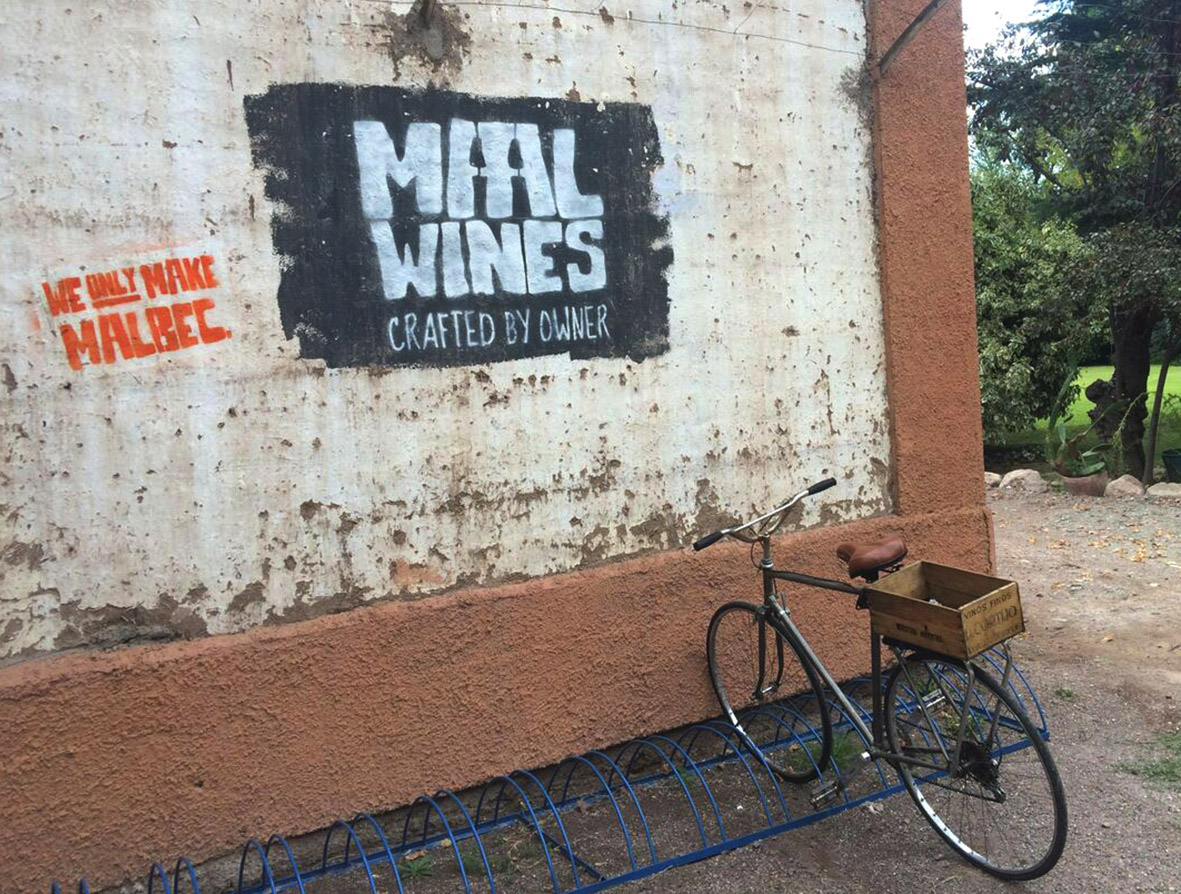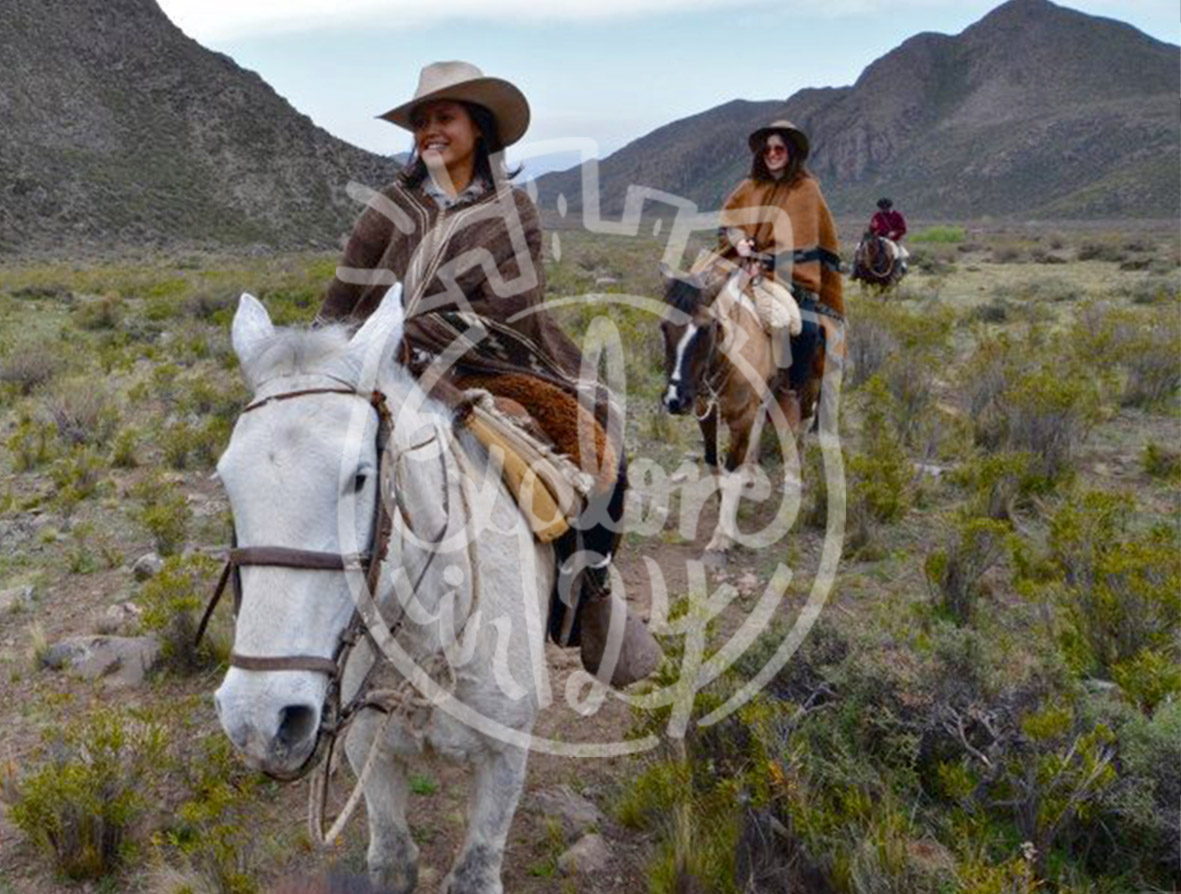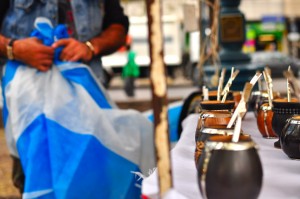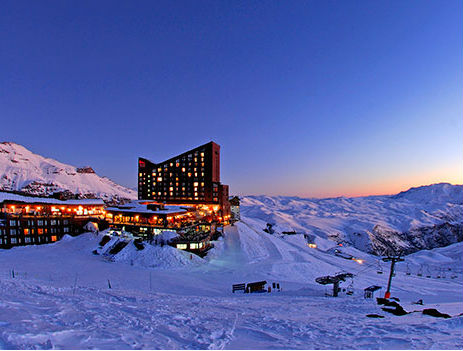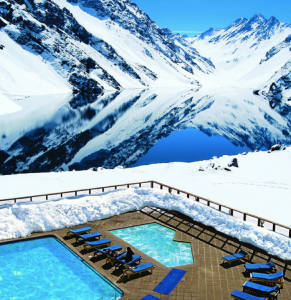Once you’ve grappled the Spanish language you’ll know that mal means bad, but a visit to Maal Wines is anything but bad. With excellent wines coming from a historical winery, albeit with a modern wine making approach, the wines are one thing that shine, and the experience too.
From the outside looking in, Maal Wines is unsuspecting. Only a small sign indicates that you have found your destination, nestled among residences and small shops just off the main drag in Lujan de Cuyo. Friendly staff, mountain views and relaxing vibes await visitors inside the main gates.
The tour begins among the vines located on the bodega’s property where we learned about the historical significance of wine in Argentina and what Malbec means to Alberto Merlo, the bodega’s founder, who is so enamored with the variety that it is the only one he makes!
The property’s main building houses old fashioned wooden and metal tanks and barrels, no longer in use but making for a comparison to modern technology. In the subterranean level of the building, guests can experience the catacombs of wine making. Old wine tanks have been emptied and doorways created so that guests can enter and experience the depth of the wine tanks, the stains of Malbecs past are visible on the walls. Traveling down a dim hallway, you pass wrought iron gates to what was once a storage area and is now an event space filled with wooden barrels.
Outside, sits the Maal Wines cabaña. The cabaña is created completely from recycled materials and the outdoor dining experience is friendly and open. Whether you are traveling with a large party or a small group, there is space for everyone. Large picnic spaces, intimate tables for two and bar counters till the rustic space, complete with outdoor fires and an open kitchen.
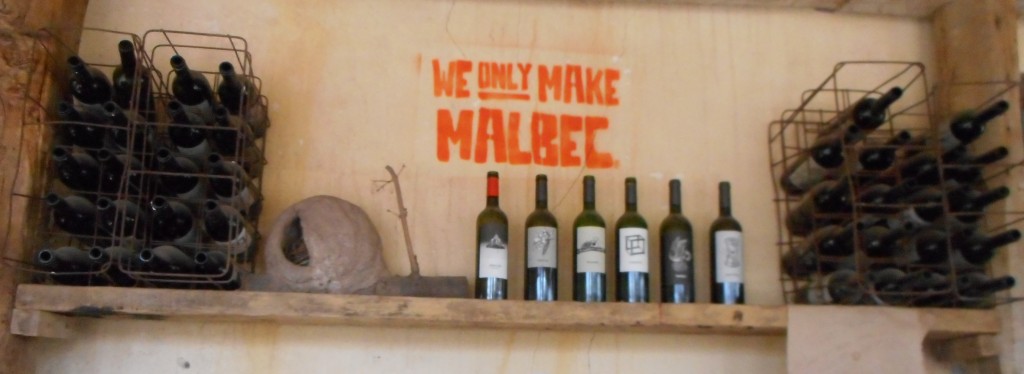
The Wines

Rebelión: This wine is created with a mix of grapes from three different vineyards located in Lujan de Cuyo, Vista Flores and Altamira. As a result, it is considered a Malbec Blend. It is easy to drink and was created with the lifestyle of an asado in mind, relaxed and familiar. Something to be shared with friends.
Biutiful: With grapes coming from the vineyards of Altamira, said to be one of the best and purest places to grow grapes in Mendoza, Biutiful is considered a “pure Malbec” or “Malbec desnudo (naked).” Being an unoaked Malbec, Biutiful replaces typical hints of oak with minerals, flowers and herbs.
Biolento: Created with the old vines at the Maal Wine vineyards, Biolento tells the story of the bodega itself. The name shares two sides of the tale; “bio” symbolizes the wine’s organic tendency. “Lento” and the image of an ant on the bottle depict the winemakers’ slow battle against ants while creating the wine.
Imposible: The underdog of Maal wine family, Imposible was created at a vineyard in Vista Flores that many doubted would do the job. Critics said it is impossible to make wine there, and so the name was born. Imposible is known as the “desfiante” of the line, or the defiant.
Bestial: The first wine to be created by the winemakers, Bestial helped lay the foundation for Maal Wines. Created in Vista Flores, Bestial is the most “classic” of the five. The wine remains in the casks for six months and uses three types of oak: French, American and Argentine.
Want to visit Maal winery? Why not discover the roots of Mendoza’s terroir with our wine tour!
